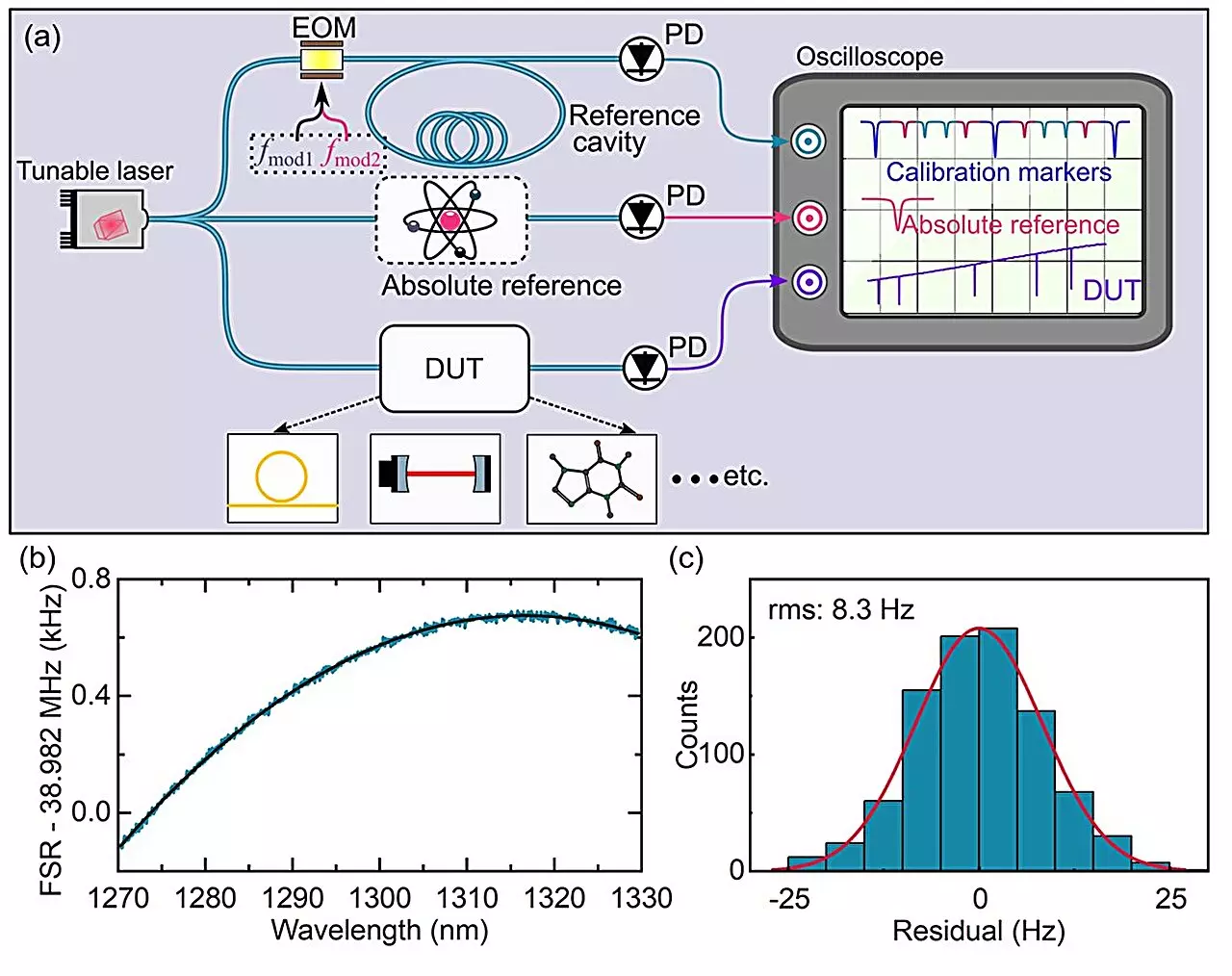Since the first demonstration of the laser in the 1960s, laser spectroscopy has revolutionized the field of atomic and molecular research. The advancements in laser technology have significantly improved the accuracy and precision of spectroscopic measurements, leading to breakthroughs in various scientific disciplines.
Frequency comb-based laser spectroscopy is a cutting-edge technique that allows for extremely precise frequency measurements, with an accuracy of up to 18 digits. This remarkable precision has been recognized with a Nobel Prize in Physics and has opened up new possibilities in optical clocks, gravity sensing, and the search for dark matter. However, despite its high spectral resolution and bandwidth, frequency combs have limitations in detecting trace gases due to low power per comb mode and gaps between comb modes.
On the other hand, tunable continuous-wave (CW) laser spectroscopy offers high photon flux, long interaction paths, and frequency agility, making it ideal for sensitive molecular spectroscopy, gas sensing, and LIDAR applications. These systems, however, often face challenges with fluctuations in laser frequency scan speed. Various methods have been developed to address these fluctuations, including interferometric approaches and optical frequency combs.
A recent development in laser spectroscopy is the combination of frequency comb calibration with tunable laser spectroscopy. This hybrid method combines the accuracy of a frequency comb with the tunability and high power of a CW laser, offering a unique set of advantages. However, achieving stable performance with this method requires a reference frequency comb with specific characteristics, which can be difficult to achieve.
Researchers at the Max Planck Institute for the Science of Light have introduced a new, straightforward broadband spectroscopy method with Hz-level precision using a tunable laser. This innovative technique involves on-the-fly calibration of the laser frequency using a fiber cavity and a dual radio frequency modulation technique. By tracking the color of the sweeping laser at every point in time, the researchers were able to achieve ultra-high precision in measuring optical frequency distances between spectral features.
This new method has a wide range of potential applications, including LIDAR systems, 3D imaging, open-path trace gas sensing, characterization of photonic devices, and calibration of astrophysical spectrometers. Its simplicity and robustness make it suitable for use in challenging environments and out-of-lab applications, offering researchers a powerful tool for advancing their scientific inquiries.
The advancements in laser spectroscopy have transformed the way researchers study atoms and molecules, pushing the boundaries of precision and accuracy in scientific measurements. The combination of frequency comb-based and tunable laser spectroscopy techniques has opened up new possibilities for a wide range of applications, paving the way for future breakthroughs in modern research.


Leave a Reply